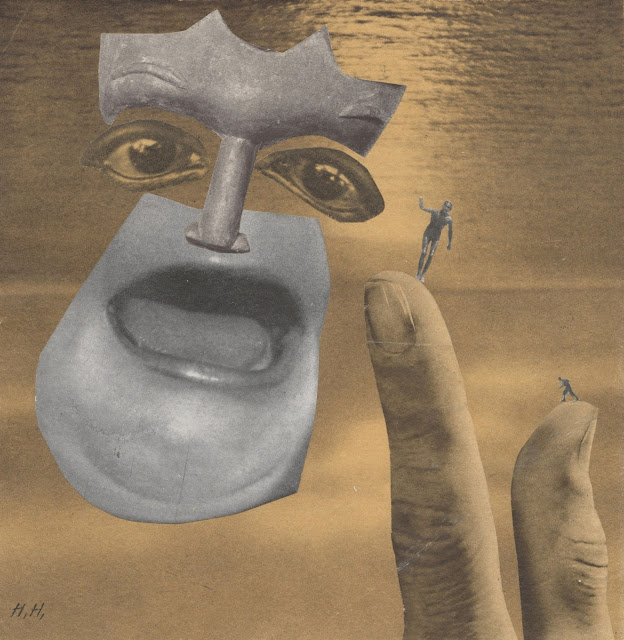Hannah Höch (November 1 1889 – May 31 1978) was a German Dada artist. She is best known for her work of the Weimar period, when she was one of the originators of photomontage.
Photomontage, or fotomontage, is a type of collage in which the pasted items are actual photographs, or photographic reproductions pulled from the press and other widely produced media.
Höch's work was intended to dismantle the fable and dichotomy that existed in the concept of the "New Woman": an energetic, professional, and androgynous woman, who is ready to take her place as man's equal. Her interest in the topic was in how the dichotomy was structured, as well as in who structures social roles.
Other key themes in Höch's works were androgyny, political discourse, and shifting gender roles. These themes all interacted to create a feminist discourse surrounding Höch's works, which encouraged the liberation and agency of women during the Weimar Republic (1919–1933) and continuing through to today.
Dada was an artistic movement formed in 1915 in Zurich, Switzerland. The movement rejected monarchy, militarism, and conservatism and was enmeshed in an "anti-art" sentiment. Dadaists felt that art should have no boundaries or restrictions and that it can be whimsical and playful.
These sentiments arose after the Great War, which caused society to question the role of government, and to reject militarism after seeing the atrocities of war. Many Dada pieces were critical of the Weimar Republic and its failed attempt at creating a democracy in post-war (WWI) Germany.
The Dada movement had a tone of fundamental negativity in regards to bourgeois society. The term "dada" has no actual meaning – it is a childlike word used to describe the lack of reason or logic in much of the artwork.
Höch is best known for her photomontages. These collages, which borrowed images from popular culture and utilized the dismemberment and reassembly of images, fit well with the Dada aesthetic, though other Dadaists were hesitant to accept her work due to inherent sexism in the movement.
Her work added "a wryly feminist note" to the Dadaist philosophy of disdain towards bourgeois society, but both her identity as a woman and her feminist subject matter contributed to her never being fully accepted by the male Dadaists.
















